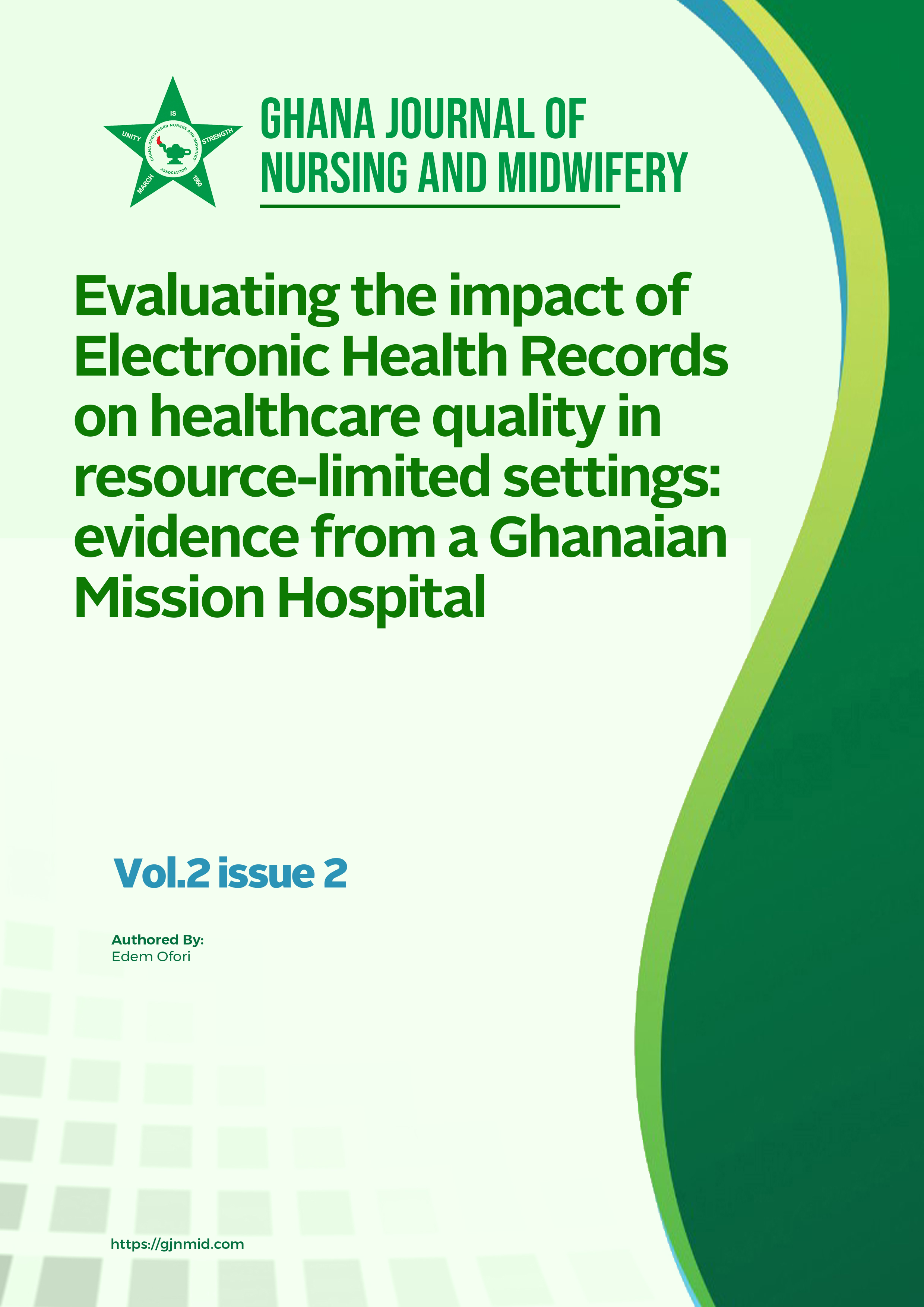Evaluating the impact of Electronic Health Records on Healthcare Quality in Resource-Limited Settings: Evidence from a Ghanaian Mission Hospital
Main Article Content
Abstract
A reliable information network is crucial for delivering effective and efficient medical care. The significance of information within the healthcare system is immense, as it plays a pivotal role in facilitating communication and coordination among various departments, professionals, and between patients and clinicians. As such, it is essential to assess the impact of various health information systems, such as Electronic Health Records (EHR), on the quality of healthcare.
This study examined the impact of EHR on the quality of healthcare delivery. Twelve participants were interviewed, comprising seven staff members and five patients/clients receiving care at Our Lady of Grace Hospital in Breman Asikuma, Central Region. Thematic analysis was utilized to analyze the interview data. The findings revealed that EHR is extensively used across almost all departments at Our Lady of Grace Hospital, from administrative to clinical activities. Most staff were motivated to use EHR due to its usefulness and ease of use. Furthermore, the use of EHR contributed to improved care quality by reducing waiting times, saving costs, delivering safe and reliable care, easing patient identification, minimizing waste, enhancing customer satisfaction, and increasing revenue generation through accurate billing.
In conclusion, EHR offers numerous benefits in healthcare delivery and has the potential to enhance the quality of care when properly implemented. The study recommends the continued use of EHR at Our Lady of Grace Hospital. However, this should be accompanied by ongoing training and retraining for both staff and clients on EHR usage. Additionally, it is necessary to develop user guidelines or manuals that include troubleshooting steps and instructions on what to do if system issues arise, including server problems.
Downloads
Article Details

This work is licensed under a Creative Commons Attribution 4.0 International License.
Copyright (c) 2024
This work is licensed under a Creative Commons Attribution 4.0 International License.






